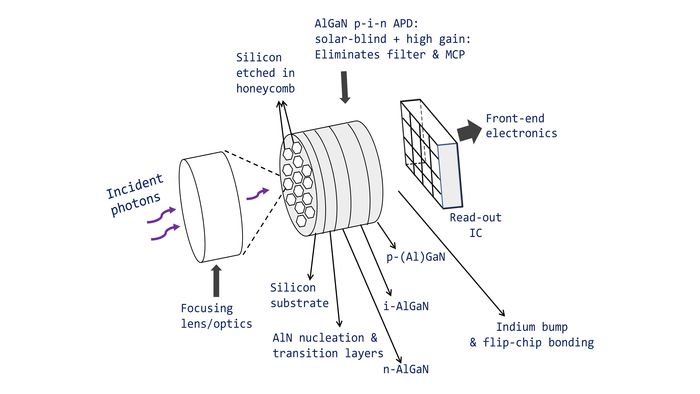WASHINGTON, April 19, 2022 – Numerous devices and detectors sense and catalog deep ultraviolet frequencies that the Earth’s ozone layer otherwise absorbs. Most solar-blind space-borne imaging platforms still rely on photomultiplier tubes and/or microchannel plates working with silicon photodiodes that increase the systems’ complexity and weight.

Credit: Digbijoy N. Nath
WASHINGTON, April 19, 2022 – Numerous devices and detectors sense and catalog deep ultraviolet frequencies that the Earth’s ozone layer otherwise absorbs. Most solar-blind space-borne imaging platforms still rely on photomultiplier tubes and/or microchannel plates working with silicon photodiodes that increase the systems’ complexity and weight.
In Journal of Applied Physics, by AIP Publishing, researchers in India are asking why, after decades of development and promising results, ultrawide bandgap (UWBG) photodetectors with deep UV capabilities haven’t enjoyed widespread adoption, and are taking stock of advancements and challenges in the field.
“From the device and materials point of view, enough advances have been made,” said author Digbijoy Nath, from the Indian Institute of Science. “Now, it’s time to bring systems and imaging experts and device and materials engineers together to study and qualify UWBG detectors under actual conditions for real-world applications.”
Unlike their silicon-based counterparts, UWBG photodetectors made from aluminum gallium nitride and gallium (III) oxide are more efficient, can tailor cutoff wavelengths, and do not need optical filters to reject visible or infrared wavelengths for solar-blind applications.
The ability to image with UV is of strategic and astrophysical interest as well as important for industrial and biomedical applications.
In addition to determining how rugged and reliable devices are in real-world applications, the scientists said further work is needed to optimize how the materials are assembled over large area substrates, in a process of depositing crystalline materials into a thin film called epitaxy.
On the nanoscale, Nath said a better understanding can show how these devices can achieve superior performance by optimizing the arrangement of the atoms in the lattice of the semiconductors.
The researchers introduce a new benchmark for comparing photodetectors by accounting for gain, noise, and bandwidth, rather than the oft-cited parameters of photo-to-dark current ratio, responsivity, transient responses, and others.
“Further improvement in these device performance parameters isn’t going to help mature this technology for real-world applications,” Nath said.
“It’s high time now for the community to have a pull from the industry and strategic sector so that device and material engineers can start working with imaging and systems groups to actually develop focal plane arrays and to integrate these with front-end electronics for real-life testing and applications.”
###
The article “The road ahead for ultrawide band gap solar-blind UV photodetectors” is authored by Anisha Kalra, Usman Ul Muazzam, Rangarajan Muralidharan, Srinivasan Raghavan, and Digbijoy Neelim Nath. The article will appear in The Journal of Applied Physics on April 19, 2022 (DOI: 10.1063/5.0082348). After that date, it can be accessed at https://aip.scitation.org/doi/full/10.1063/5.0082348.
ABOUT THE JOURNAL
Journal of Applied Physics is an influential international journal publishing significant new experimental and theoretical results in all areas of applied physics. See https://aip.scitation.org/journal/jap.
###
Journal
Journal of Applied Physics
DOI
10.1063/5.0082348
Article Title
The road ahead for ultrawide band gap solar-blind UV photodetectors
Article Publication Date
19-Apr-2022


